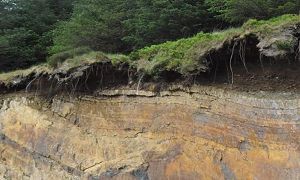CZ Science 1. Critical Zone background
Grades 15 -
16
All Disciplines
Curriculum
Educational Objectives
By the end of this module students will be able to:
- Accurately define the Critical Zone and the relationship to the atmosphere, biosphere, hydrosphere, lithosphere, and soil.
- Effectively summarize: 1) the transdisciplinary nature of CZ science and the relationship to system science; 2) the importance (and degraded state) of the CZ to supporting most terrestrial life including humanity; and 3) the importance of long-term observatories to understanding and integrating knowledge of Earth surface processes.
More on this module's objectives can be found here.
Audience
Higher Education
Observatory: National CZO
Author(s): Timothy White (Pennsylvania State University)
Contact(s):
Funding: National Science Foundation–funded SERC InTeGrate project
Related Resource(s):
- CZ Science 0. Undergrad course (7 modules)
- CZ Science 2. Methods of Critical Zone Science
- CZ Science 3. Critical Zone architecture & evolution
- CZ Science 4. Land-atmosphere exchange
- CZ Science 5. Water transfer through the Critical Zone
- CZ Science 6. Geochemistry & biogeochemistry
- CZ Science 7. Humans in the Critical Zone
Details for this Resource
In this module, students are introduced to the Critical Zone as a complex system that requires directed transdisciplinary study to understand: as of April 2017, Critical Zone science is just one decade old and is evolving as this course develops. Many of the fundamental approaches and concepts of Critical Zone science are derived from decades of soil science and related research endeavors now applied to conceptualizing and constructing systems models that will allow scientists to predict the effects of ongoing land use and climate change on the Critical Zone.
Module Outline
- Unit 1.1: CZ Overview (One 75 min class session)
- Unit 1.2 Role of Soils in the Critical Zone (Two 75 min class sessions)
- Unit 1.3: Introduction to system modeling and sample design (One 75 min class session)
In these three units, students will:
-
Define the CZ, stressing:
- Importance and state of the CZ
- Temporal and spatial scales of study
- The science as a transdisciplinary and international pursuit
- Observatory and environmental gradient approach
- Outstanding questions
-
Build framework for considering CZ processes and function
- Access and consider existing online data
- Introduce system modeling, research approaches, infrastructure and sample design
Explore Further



